Major JEAN
or JOHN ANDRE,
7th, then 26th Regiment
1750-80
Then of course, there's the glamorous and artistic 007 of the
18C: "The name's André... John André". Rather than
repeat information available elsewhere, I recommend
Marg's Friends
of Ban page and clicking on his name!
Jean André was born in London on 2 May (OS) / 13 May (NS)
1750, to a Franco-Swiss Huguenot couple, Anthony (Antoine)
André and Marie Louise Giradot, and christened on 16 May at
Saint Martin Orgars (Huguenot Church), London.
John has been the object of much mawkish sentimentalisation,
beginning with his former fiancée's girlfriend, Anna Seward
(it's a complicated situation...), and continued largely by
Americans, who seem to feel free to indulge while nevertheless being
vituperative about the mission he was engaged in. But he deserves
genuine respect. This charming, artistic young man was also a
dedicated intelligence officer. He knew the risks in 'bringing over'
enemy General Benedict Arnold, and died courageously on the gallows,
aged 29, after succeeding in his mission but failing to extricate
himself. (Moral: always wear your uniform, no matter what!) However,
it was sheer spite that he was not permitted the firing squad, a
soldier's death.
- "As I suffer in the defence of my Country, I must consider
this hour as the most glorious of my life -- Remember that I die
as becomes a British Officer, while the manner of my death must
reflect disgrace on your Commander."
Major André's last words,
General Evening Post,
Tuesday 14 November 1780.
Memorials:
1. Westminster Abbey, City of Westminster,
London
John was exhumed in 1821 - killing a peach-tree in the process,
as its roots had twined around his skull - and sent home to London,
where he has this fine memorial (though it gets his age wrong!).
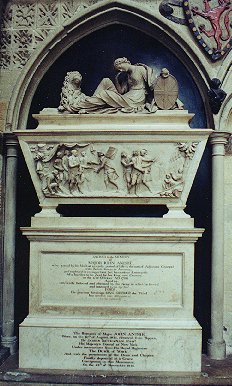
Photo by Marg
Baskin
The inscriptions read:
Sacred to the MEMORY
of
Major JOHN ANDRE,
who, raised by his Merits at an early period of Life to the rank of
Adjutant-General
of the British Forces in America,
and employed in an important but hazardous Enterprise,
fell a Sacrifice to his Zeal for his King and Country
on the 2nd of October, AD 1780
Aged 29.
universally Beloved and esteemed by the Army in which he served,
and lamented even by his
FOES,
His gracious Sovereign KING GEORGE the Third
has caused this Monument
to be erected.
The second part was added after the repatriation of the
body:
The Remains of Major JOHN ANDRE
were, on the 10.th of August, 1821, removed from
Tappan
by JAMES BUCHANAN, ESQ.R,
His Majesty's Consul at New York,
Under instructions from His Royal Highness
The DUKE of YORK,
and, with the permission of the Dean and Chapter,
Finally deposited in a Grave
Contiguous to this Monument
On the 28.th of November, 1821.
The carvings are described by Benson Lossing in
The Two Spies, Nathan Hale and John
André, pp. 106-8
- On the sarcophagus is a representation of Washington and his
officers in his tent at the moment when he received the report of
the court of inquiry; at the same time a messenger has arrived
with the letter of André to Washington asking for a
soldier's death. On the right is a guard of Continental soldiers,
and a tree on which André was executed. Two men are
preparing the prisoner for execution, while at the foot of the
tree sit Mercy and Innocence. On the top of the sarcophagus is the
British lion, and the figure of Britannia, who is lamenting the
fate of André.
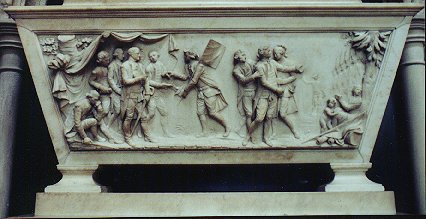
Photo by Marg
Baskin
As Marg has told us, the history of
his memorials in America is more complex:
2. Tappan, New York
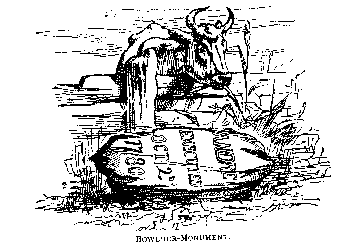 The
first was simply a boulder inscribed: "ANDRE WAS EXECUTED OCTOBER 2,
1780" set up by James Lee, a New York merchant. It was later
removed.
The
first was simply a boulder inscribed: "ANDRE WAS EXECUTED OCTOBER 2,
1780" set up by James Lee, a New York merchant. It was later
removed.
An 1878 visit to Tappan by Rev. Arthur Penrhyn Stanley, the Dean of
Westminster, prompted the erection of a replacement by another New
York merchant, Mr. Cyrus W. Field, in the teeth of popular outrage
from various "Disgusteds of New York" who threatened to destroy any
memorial.On 2 October, 1879, the 99th anniversary of the execution,
Field's granite monument, with Stanley's inscription, was erected on
the site of John's original burial. Lossing writes that it
- was uncovered in the presence of representatives of the
Historical Societies of New York, and Rockland County, of officers
of the army of the United States, of the newspaper press and other
gentlemen, and a few ladies. At noon, the hour of the day when
André was executed, Mr. Field directed the workmen to
uncover the memorial. There was no pomp or ceremony on the
occasion. Not a speech was uttered, nor a token of applause
given.
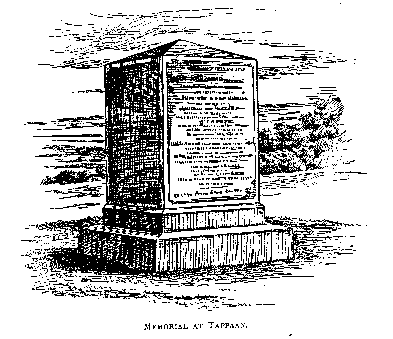
It bears the following inscriptions:
HERE DIED, OCTOBER 2, 1780,
MAJOR JOHN ANDRE, OF THE BRITISH ARMY,
WHO, ENTERING THE AMERICAN LINES
ON A SECRET MISSION TO BENEDICT ARNOLD,
FOR THE SURRENDER OF WEST POINT,
WAS TAKEN PRISONER, TRIED AND CONDEMNED AS A SPY.
HIS DEATH,
THOUGH ACCORDING TO THE STERN RULE OF WAR,
MOVED EVEN HIS ENEMIES TO PITY;
AND BOTH ARMIES MOURNED THE FATE
OF ONE SO YOUNG AND SO BRAVE.
IN 1821 HIS REMAINS WERE REMOVED TO WESTMINSTER ABBEY.
A HUNDRED YEARS AFTER THE EXECUTION
THIS STONE WAS PLACED ABOVE THE SPOT WHERE HE LAY,
BY A CITIZEN OF THE UNITED STATES, AGAINST WHICH HE FOUGHT,
NOT TO PERPETUATE THE RECORD OF STRIFE,
BUT IN TOKEN OF THOSE BETTER FEELINGS
WHICH HAVE SINCE UNITED TWO NATIONS,
ONE IN RACE, IN LANGUAGE, AND IN RELIGION,
WITH THE HOPE THAT THIS FRIENDLY UNION
WILL NEVER BE BROKEN.
On another face:
"HE WAS MORE UNFORTUNATE THAN
CRIMINAL."
"AN ACCOMPLISHED MAN AND GALLANT OFFICER."
GEORGE WASHINGTON.
(The first of these two lines was quoted from a letter of
Washington to Count de Rochambeau, October 10, 1780. The second line
is from the sentence of a letter written by Washington to Colonel
John Laurens on 13 October.)
"SUNT LACRYMAE RERUM ET MENTEM MORTALIA
TANGUNT."
Two attempts were made to blow up the memorial by 'Patriot'
cranks.
3. Tarrytown, New York
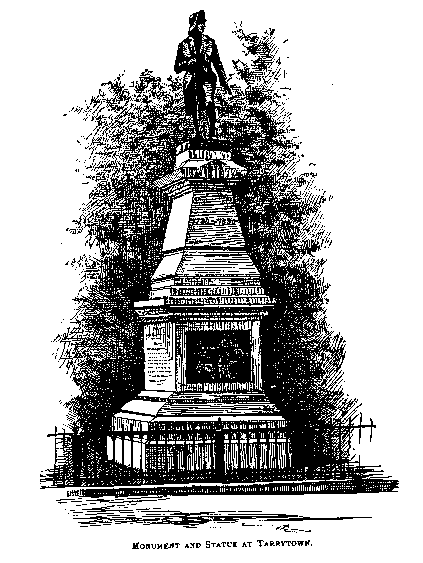
A memorial of a Rebel soldier, on a base featuring a relief of
John's capture, marks the site of that event. This was unveiled on
the centenary, 23 Sept. 1880, to replace an earlier inscribed
memorial stone, which was incorporated into it:
On this spot, the 23d of September, 1780,
the spy, Major John André,
Adjutant-General of the British Army,
was captured by
John Paulding, David Williams, and Isaac Van Wart,
all natives of this county.
History has told the rest.
The people of Westchester County
have erected this monument
as well to commemorate a great event
as to testify their high estimation of
that integrity and patriotism which,
rejecting every temptation,
rescued the United States from most imminent peril
by baffling the acts of a spy and the plots of a traitor.
Dedicated October 7,1853.
Return to Top
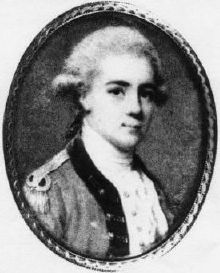
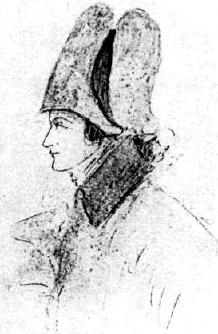




 The
first was simply a boulder inscribed: "ANDRE WAS EXECUTED OCTOBER 2,
1780" set up by James Lee, a New York merchant. It was later
removed.
The
first was simply a boulder inscribed: "ANDRE WAS EXECUTED OCTOBER 2,
1780" set up by James Lee, a New York merchant. It was later
removed.
